
by Lynn Sanders | Jun 4, 2018 | DMM Blog
“We are what we repeatedly do.” Aristotle, ancient Greek philosopher and scientist
Welcome back to our adventure in discovering the proven ways we can build trust.
As I’ve shared earlier, trust is a natural outgrowth of countless actions, words, thoughts and intentions. We have to be willing to take action on a daily basis to earn trust. Over the past three articles, I’ve touched on six of the Eight Pillars of Trust, from David Horsager’s book, “The Trust Edge.” The last two pillars provide a great deal for all of us to contemplate.
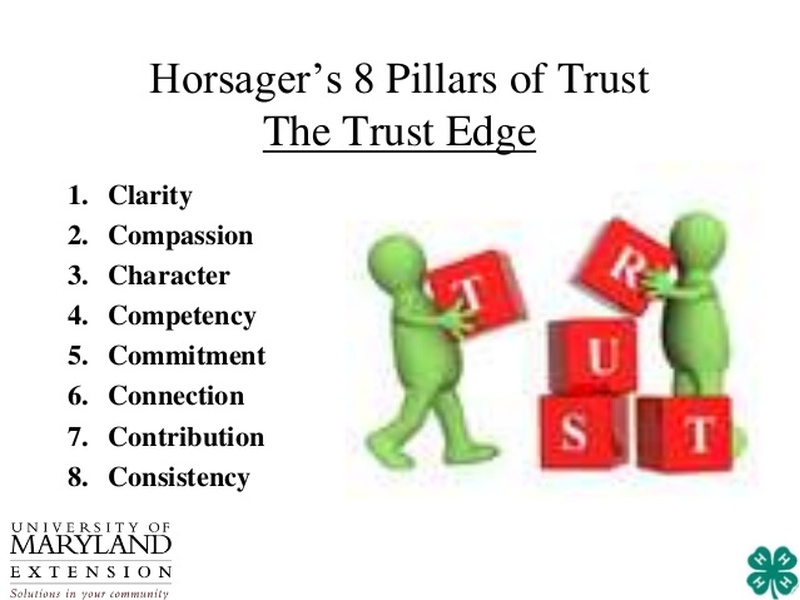
PILLAR #7: CONTRIBUTION
To put it simply, you’ve got to DO something to build trust! Taking action leads to results.
Contribution involves taking action. If you’re like me, you may worry over making an action “perfect.” But then what happens? We can get stopped in our tracks. How can we ever make something perfect?
As small-business expert, Mark LeBlanc says, “Done is better than perfect.” For a business to deliver results, they need to motivate their people, create policies that promote completing tasks, and reward results by recognizing employees. Here are a few tips…
Key Strategies To Become A Daily Contributor
- Plan tomorrow today!
- Deliver with DMA’s (Difference-Making Actions – more on that!)
- Keep a clear desk – Leads to a clear mind – which results in high productivity.
- Email efficiency – Limit your email checking to specific times during the day.
- Practice a power hour – Take a quiet hour each morning – no interruptions. Focus on the activities you’ve identified for your greatest impact.
Horsager recommends taking the last fifteen minutes of a workday to plan and prioritize activities for the next day. Then, you not only remember the most important tasks, but you’re ready for success.
DMA’s (Difference-Making Actions) provide even more focus to our day. It’s a strategy of choosing the five most important items on our “to-do” list each day. Check out how DMA works…
The DMA Strategy (Difference-Making Actions)
- At the start of your morning, take out a sticky note.
- Write your most important goal.
- Then write the numbers 1-5 down the paper.
- Next to the 1, write the most important thing you could do today to reach that goal.
- Then write the next most important things under 2,3, 4, and 5.
“Every minute you spend planning saves you an average of approximately 10 minutes in execution.” Brian Tracy.

PILLAR #8: CONSISTENCY
Without consistency, none of the other pillars will matter.
“The fastest way to build a brand is consistency of message and product,” says Horsager. “When we can count on people to deliver what they say, every single time, they become indispensable.”
Consistency is like a savings account. You put a small amount in each day, and over time, it pays you back in safety and security. But if you spend it all in one week, you’re starting at the beginning. Like your savings account, trust is built over time.
Being consistent also means staying true to your word. Don’t agree to something that can’t be delivered. (A great example of a most trustworthy company is FedEx – with their promise of “Overnight delivery – guaranteed!” Their consistency helped them grow into a global empire, spanning 220 countries and territories, and handling more than 3 million packages each day!)
Imagine that trust is like oxygen in our air. We don’t think about it constantly, but it plays a vital role. With every interaction we take, trust increases or decreases. Ultimately, people are judging us not by our words, but by our actions. To build trust, we often rely on references and reviews. What people say about us matters.
We are each the total of our collective actions and decisions. Horsager emphasizes: “it’s the little things done consistently that sharpen the trust edge.”
Indeed, I think the time has never been more urgent than for us to be as trustworthy as possible. In our world, the foundation of trust seems to be at an all-time low. The public is uncertain who to believe anymore. As we lead by example in being trustworthy, I believe we can inspire others to follow the same actions.
My advice?
Follow the Eight Pillars of Trust. You’ll gain a competitive edge. Acquire a mass following. And live a happier and more fulfilled life.
Trust is THE currency of business and life today!


by Lynn Sanders | Jun 4, 2018 | DMM Blog
Life is short.
Once you realize that, the question becomes: How do you choose to live it?
In 2004, when I turned 50, three very special people in my life suddenly passed away in a span of eight weeks. Nancy Kalita, a best friend from highschool. My angel of a mom at age 73. And my former boss, composer Shelly Elias, who collaborated with me on commercial songs. Since that time, others have died, but it was those three abrupt departures that shook me to my core.
Those events marked a radical shift in my thinking. I realized I needed to have more meaning in my everyday life. It made me think deeply, “How did I want to live my life?”
While I had been doing freelance writing for corporate clients about anything, I no longer wanted to write copy that wasn’t meaningful to me. I kept thinking, What difference am I making?
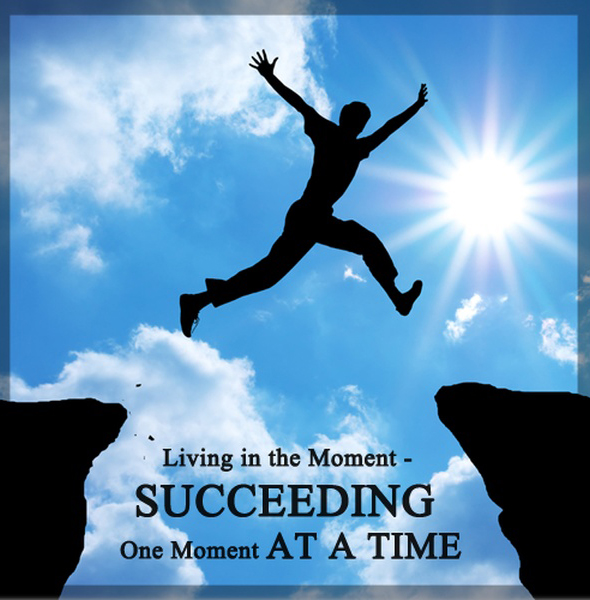
That wake-up call was like a blinking neon sign: LIVE LIFE NOW! I was being nudged to be conscious of my time. Did I even want to keep living? What difference was I making?
Even before my mom passed away, I remember asking her once, “why am I writing catalog copy about staplers?” I was so bored! “Is this what I went to college for?” Her smart answer? “Well, someone needs to know!” Yes, I guess someone does. But it wasn’t the right fit for me.
Did I have to accept any freelance writing project? We needed the income but still – how was I living my life? Could I create something more meaningful? Could I consciously decide to just focus on creating words to inspire, motivate and empower others? (Note: Some of my past client projects were in perfect alignment with my soul… just not all of them.)
After those three precious souls died, my world came tumbling down. So much didn’t seem important. I knew I couldn’t waste my hours. The clock of my life was ticking away. Each days was numbered.
How much was I getting done that mattered to ME?
Once, I sent my mom an email with the words “Carpe Diem!” (Latin for “Seize the moment.”) She’d kidded me back, “I’m carping as much as I can.” But – was I “carping?”
It took a shock to my system to wake me up. Perhaps that’s what I needed. The healing took over a year. Finally, I found a ray of hope in many signs that happened, demonstrating beyond a shadow of a doubt that I never lost any of my loved ones. They’re with me in spirit form. Love never dies. (You know that, don’t you?)
But the question still remained: Am I REALLY living consciously? Since that fateful time, I’ve become quite introspective. Spiritual books naturally gravitate towards our home, lining our bookshelves. They seem to just appear… landing up on my nightstand for reading and contemplation.
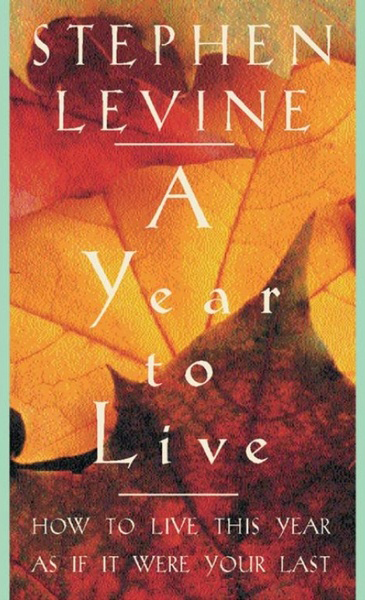
One of those compelling books is pushing me now into uncharted territory… to be more and do more in my life. The book is: A Year To Live: How To Life This Year As If It Were Your Last, by Stephen Levine. Levine worked in hospice for years, and helped many at the end of their lives. He saw how often people felt regret, realizing they hadn’t accomplished their deepest desires. They wanted just a little more time…
The same situation happened over and over. So many people weren’t prepared for death. We all know it’s going to happen sometime. But no one likes to even think about it. No one likes to prepare for it. Levine wondered, What if…. What IF – this was his last year to live? Would he live it differently? What would he do?
Then, Levine turns to us and asks, “what would YOU do if you knew this was your last year?” Those words swirl around me. I’m looking at each day differently.
How can I live more consciously? What’s most important to me? How do I accomplish my mission while I’m still here? Last year, I got my children’s book finally published. It had been in my heart for 20 years! I still want to do more… even speak more… but how do I get it done?
Can I have the courage to live fully and make a bigger impact? Can I help more “difference makers” tell their stories through live streaming video interviews and writing? Can I affect greater positive change in the world?
This present moment is the only sure thing we’ve got. I feel like I’m changing inside… spurred on by this one book. I’d like to share more contemplations in my next article. For now, let’s consider that we’re taking this “one year to live” journey together.
What would YOU do if you were preparing for this year to be your last?
Would you be willing to share your thoughts with me? We each make a difference. We just get to decide what that difference will be.
Let’s have a dialogue together. We can accomplish so much if we simply choose to believe in ourselves.
One of the exercises in A Year To Live is to show your gratitude to others. As part of that process, I want to thank my talented colleagues at GoRead. Your effort to write, post and connect with new people brings a smile into the lives of others. Thanks to all my fans and followers. I want to acknowledge several who’ve made personal contact with me over the past few months: Carolyn Owens, Renee Mollan Masters, Nicholas Boothman, Anna Giannone, Barry Hoffman, Carolyn Ferren, Burt Kempner, Deanna Ford, Roy Alabado, Shari Reinhart, Bill Bergfeld, Ken Dunn, Warren Bull, Vaughn Berkeley, Colin Alston, Mario MJ Perron, Stan Holden, Russell Dennis. My biggest thanks to my dear friend, Roland Takaoka, who inspires me to live life to its fullest.
There’s no time like now. Be conscious of the present. Take time to live in the present. And may all your greatest dreams come to life!

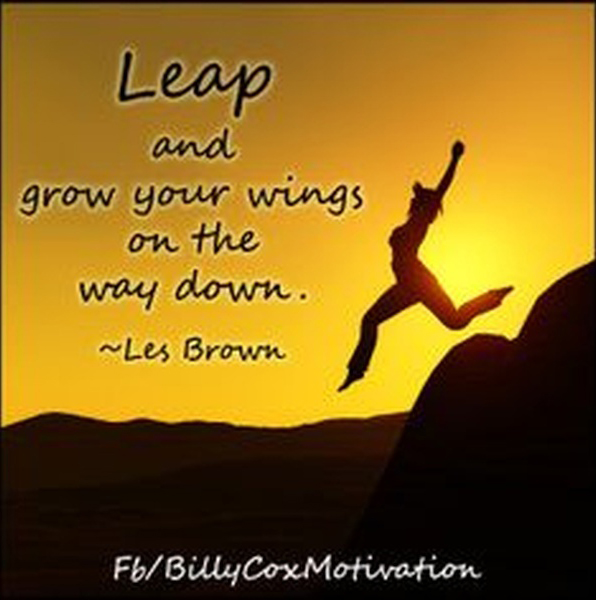
by Lynn Sanders | Jun 4, 2018 | DMM Blog
”There is no greater agony than bearing an untold story inside you.” Maya Angelou
Whether you realize it or not, we ARE our story.
Whatever we tell ourselves, that’s what our brain will choose to believe. Do we rely on the opinion of others to shape our lives? Or can we think “outside the box” and be the person we are intended to be?
Many of my past articles dealt with my philosophy on life, commentaries on books that I value, and personal experiences. Today, I’d like to give you practical business advice. After 25+ years of creative writing, interviewing and video producing experience, I’d like to offer these seven strategic tips to help you grow and expand your business. There is magic in your stories!
Seven Strategic Secrets In Marketing Your Stories
1. Have a “UNIQUE SELLING PROPOSITION” (USP) – What makes your business different from everyone else? Tell YOUR story in a compelling way, and people will notice. My “USP” is “Bringing Stories To Life”… going above and beyond to support causes through writing, videos and live video streaming interviews.
My work extends from serving those in education, healthcare, social services to the arts and the environment. Here’s a photo of me climbing down a ladder during our family’s healthcare mission in Ecuador. After doing publicity and email marketing, and gathering more donations than I had thought possible, it was quite an uplifting experience to help children in need.

2. Know Your Target Market – Who is your audience? Where can you find them? What are their traits and characteristics? The better you know your ideal audience, the better you’ll be at marketing your products or services.
3. Solve Your Listener’s Problems. People want to know WIIFM – What’s in it for me? In your video, let your future clients know the benefits you’ll provide for them. Repeat your message at least three times through your video.
4. Build A Media Library. Keep your camera handy for all different events during the year. When you’re ready to create a video, you’ll have lots of footage to enhance your story. Here’s a candid photo from a client’s video interview.
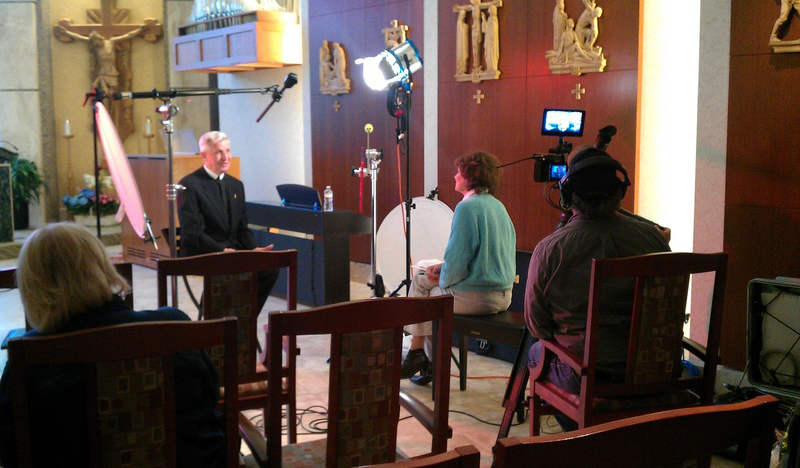
5. Prepare For The Three P’s – Pre-Production (Scripting, research, preparation), Production (the actual shoot), Post-Production (the editing.). Create a time line and allow enough time for a professional to write a script, based on your objectives and audience.
6. Hire Professionals To Help You Create A Video Story. More people than ever are watching videos instead of reading. Have you considered repurposing your message into a video? Even if you do it yourself, here are some important consideration:
* Write down an outline, bullet points, or the content of your story. Weave your message with testimonials and B-Roll (supplemental footage that’s inserted to help tell the story.)
* Make sure you have proper lighting and high quality sound. Make sure you have a good editor, who can keep the pace flowing smoothly.
* If you create your own video — Get professional feedback at SOME point to ensure the proper lighting, sound and content.
7. Market Your Content On Multiple Platforms. Once your story is completed, use it as a marketing tool. Repurpose your blog or video by embedding it on your website. Post a video on YouTube. Add a favorite quote on a social media channel.
Best of all, consider being showcased as “the expert” online with a video interview. We can interview you on a private or livestream video interview, to share your stories with an interactive audience. There’s nothing like it!
Here’s an example of a livestream video interview with internationally recognized singer, songwriter and speaker, Tiamo de Vettori. My friend, Roland Takaoka served as the wingman, and oversaw comments in our comment stream. Check out:
http://bit.ly/HOA-Tiamo
I encourage you to share your stories online. Get over feeling self-conscious on camera. (Just push yourself past the fears!) Recognize the value you bring to your audience.
The more you give of yourself, the more people will seek you out. I believe in YOU!
Warmly,
Lynn Sanders
P.S. If you’d like to share your story as a guest on my program, “The Difference Makers,” or need help in writing, you can reach me at: lynn@https://differencemakersmedia.com
P.P.S. Here’s a great checklist that you can use to determine your greatest story marketing needs. Visit: http://bit.ly/DMM-Checklist


by Lynn Sanders | Jun 4, 2018 | DMM Blog
“Trust, not money, is the currency of business and life.” David Horsager, author, The Trust Edge.

How do you KNOW when you can really trust someone?
A friend from GoRead recently said to me, “I don’t know WHO I can trust anymore!”
I paused to reflect. “Well, we can always rely on our intuition,” I suggested.
But then, I wondered. What if our inner guidance system isn’t working well?
All good relationships rely on trust. Since I’ve experienced my share of disappointments, I felt drawn to learnig more about the topic of trust. In this third part of my series, I’ll provide highlights from the outstanding book, “The Trust Edge” by author David Horsager.
Horsager teaches us how to build a foundation of trustworthiness, referred to as, “The Eight Pillars Of Trust.” These eight traits have proven to bring dramatic results to relationships.
So are you ready? Let’s venture forward! If you missed the earlier Pillars of Trust, you can check my articles, covering Pillars 1-4. Let’s continue on… Tally-ho!
PILLAR #5: COMMITMENT
Think about the great leaders in our world. Washington, Lincoln, Gandhi, Mother Teresa, Martin Luther King, Jr. Their commitment is obvious, unwavering, and genuine. They are leaders who care about causes beyond themselves.
Trustworthy leaders take responsibility. They make sacrifices. They consistently do what they say. Is that what you do? If so, others probably notice it too.
“Deflecting blame is no way to build trust,” advises Horsager. Trustworthy people are able to apologize for mistakes with sincerity.
Beyond that, the ones we trust will often over-deliver on a promise. Going that “extra mile” reinforces the feeling that we’ve found a trustworthy person.
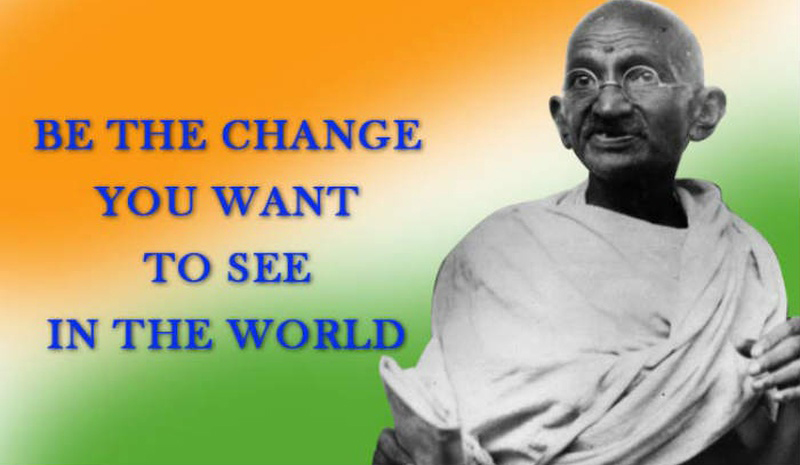
PILLAR #6: CONNECTION
“In every interaction, we increase or decrease trust,” says Horsager.
Think about that. Everyday, we have a choice about our behavior. What are we doing to attract or repel others?
To increase trust, we need to reach out, and develop a friendly connection with people.
Remember the old AT&T commercial, “Reach Out and Touch Someone?” It captured the essence of the value of connections. (Check it out on the highlighted words above. It’s amazing how old-fashioned the cord phone looks in today’s world!)
Every friendly connection builds an invisible bond between us and someone else. To strengthen your trustworthiness, you’ll want to embody traits that are “Magnetic” vs. “Repellent.”
Magnetic: Grateful, Good listener, positive, optimistic, encouraging…
Repellent: Thankless, talker only, complaining, pessimistic, critical…
Want to practice building positive connections? You’ll benefit from excellent ideas in Stan Holden’s book, “Giving Candy To Strangers.”
Next week, I’ll pull back the invisible curtain on the final two pillars. Until then, please realize that our world desperately needs more leaders who can be trusted.
Leaders who demonstrate: CLARITY – COMPASSION – CHARACTER – COMPETENCY – COMMITMENT – CONNECTION.
We need leaders like YOU!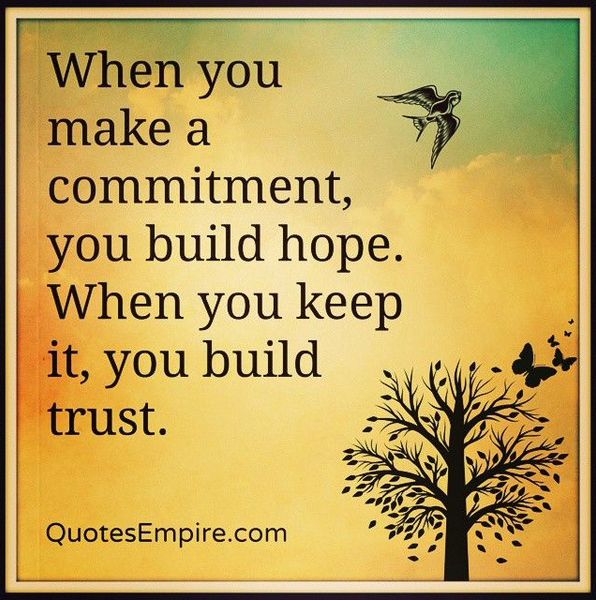
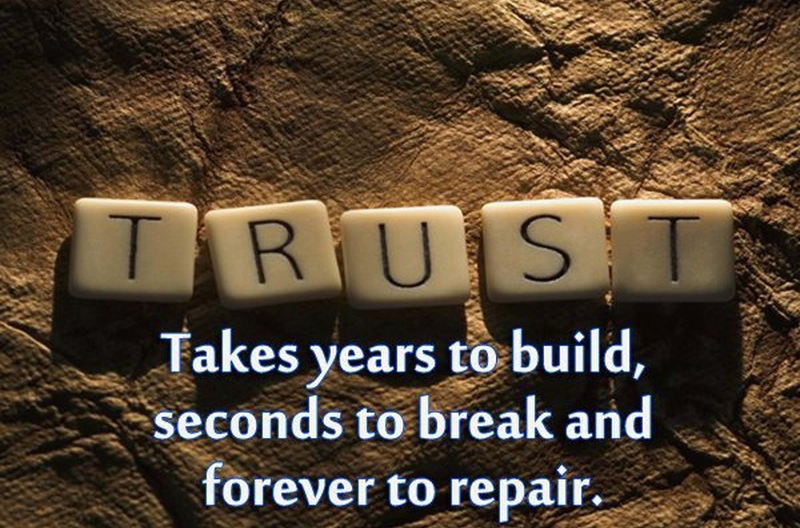
by Lynn Sanders | Jun 4, 2018 | DMM Blog
“The shortest and surest way to live with honor in the world is to be in reality what we would appear to be.” Socrates, Greek philosopher (469-399 BC)
You’re about to get the inside scoop on building relationships that can change how you do business forever. It all comes down to understanding “The Eight Pillars of Trust.” If you want to learn more, check out author David Horsager’s book, The Trust Edge.
Face it, trust is the foundation for ANY relationship we create.
Last week, I shared the first pillar of trust – Clarity. People trust a clear message from you, and mistrust the ambiguous. Now, let’s move ahead…
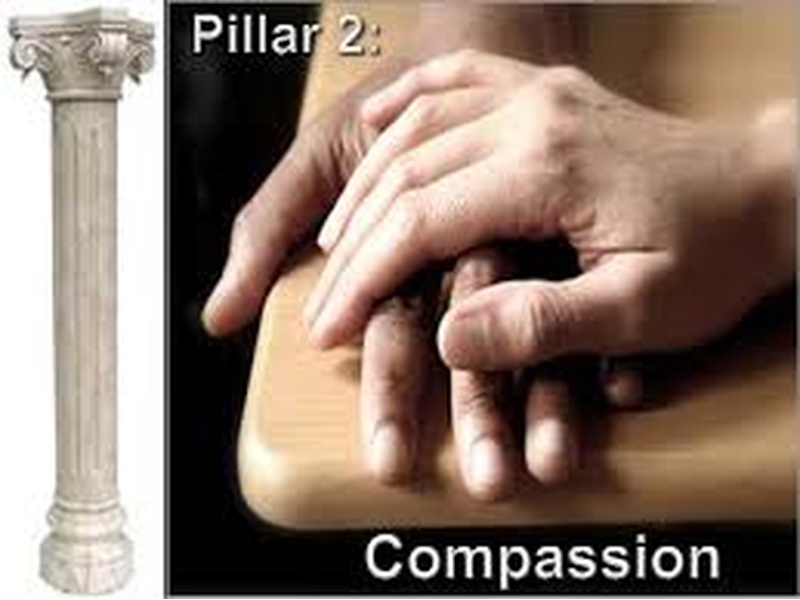
PILLAR 2: Compassion
Here’s the bottom line is – to build trust, you’ve got to really care about people.
Horsager explains that you need to not only “walk in someone else’s shoes” but also be continually acting on the principle, “Do unto others as you would have them do unto you.”
Ultimately, having compassion means putting the interests of people first. Adam Smith, the father of modern economics, acknowledged that “profit is the reward one gets for serving the general welfare.”
Being compassionate relies on four “Laws” – Listen, Appreciate, Wake up and Serve others. Now, let’s take a quick look at the essence of these four laws.
Listening is a skill. It makes people feel valued. So, let’s listen to each other. (That means keeping eye contact… Turning off cell phones…and paying attention to what others say to you.)
Naturally, everyone yearns to feel appreciated and recognized too. (Consider doing special things to show appreciation: sending a handwritten note.. a gift basket… giving praise… celebrating accomplishments.)
We’ve also got to WAKE UP! (Notice I used all capital letters… to make sure you take notice!) Many of us go through the motions of life, without being engaged with others. We’re living in the future or past. But time is ticking away right now. So, let’s be “present” with the people around us. What if we could wake up to this very moment?
Serving others means thinking beyond ourselves. In order to be trusted, Horsager says we need to act selflessly. Keep the great leaders of our world in mind — Abraham Lincoln, Mother Tersa, Martin Luther King, Jr…. They were trusted because they put the interests of others first.
PILLAR 3: Character
What is your inner core made of? Does your message and life reflect the same story? Do you do what you say?
Our character is reflected through our integrity. Are we consistent in thoughts, words and actions? Do we follow through on our promises?
The other side of character is having high moral standards. Most people perceive a basic sense of right and wrong. Beyond that, research demonstrates that those who live a strong moral compass have the trust and admiration of those around them, paving the way to success.
What’s the key to a high character?
Carol Odell, CEO of the BBB of Southern Colorado advises, “Know your values, and make your decisions by them.

PILLAR 4: Competency
In every action, trust is a part of competency and capability.
“The only thing more expensive than education is ignorance,” says Benjamin Frankin.
What did Franklin mean? To me, he is advising that we must always be learning. We’re never done. We’re always in that state of becoming…. like the butterfly who transforms from her debut as a caterpillar and becomes a butterfly. We too must keep growing through education.
To become our best, we must be open to advice from those who’ve already walked on our path. Decide to move ahead truthfully. Be accountable to followers. Give value to your clients and followers. They will gladly reinforce your message across their circles.
As you build your integrity, you’ll be recognized as a trustworthy character who people can always rely upon. There’s nothing better than that.
Join me next week as we continue exploring the rest of the Eight Pillars of Trust. Till then, keep in mind: Our life is filled with choices. Choose well!
**************************************************************************************************************************************************
To learn more about making a bigger difference through sharing your stories online, contact Lynn Sanders, The Story Marketing Mentor, at: Lynn@https://differencemakersmedia.com. Thank you!


















